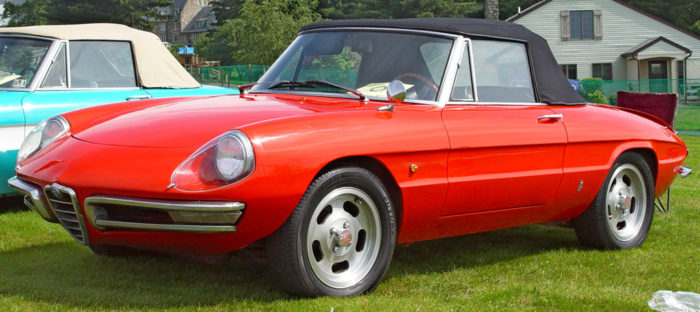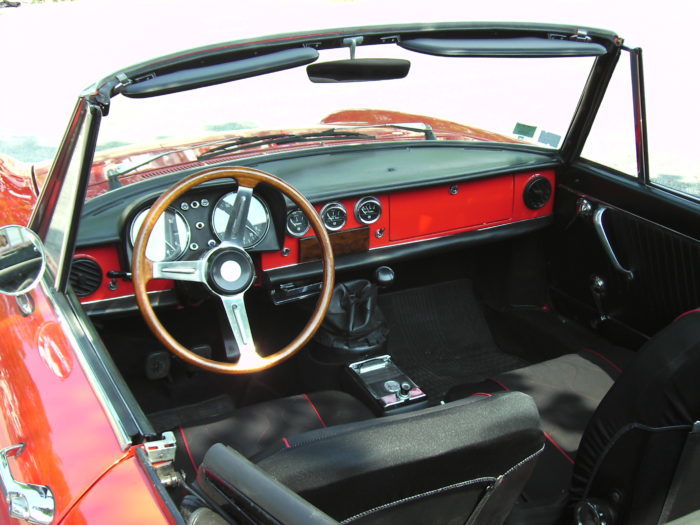
Source: Wikimedia Commons
For more than two decades—from 1966 to 1993—the Spider 1600 was Alfa Romeo’s flagship sportscar. Though it was considered a little off the mark with respect to the offerings from competitors MG and Fiat at the time, the Alfa was still a solid choice for discerning buyers. After it all, it came with a twin-cam engine, a five-speed stick shift, and one-of-a-kind styling.
The brand sold the original, boat-tailed model in 1966, and today, this back-heavy convertible is the belle of the ball. Though widely known as the Duetto—that’s duet in Italian—the name was never officially adopted due to trademark issues. Instead, the car received an austere christening: the Alfa Romeo Spider 1600.
All names aside, this distinctively stylish car is perhaps best known for its cameo appearance alongside Dustin Hoffman in 1967’s The Graduate—the film which thrust this car towards widespread notoriety. (In the 1980s, a special edition Alfa Graduate model was even made available to classic car enthusiasts in the United States.)
Designed by Battista Pinifarina and Franco Martinengo at Pinifarina, the Duetto was perhaps the first genuinely innovative car to appear on Giulia’s 105-series platform. Known for its iconic boat-tailed back end and enclosed headlights, just looking at this little roadster evokes a drive through the Italian countryside, complete with sunny skies, wine, and cheese.
Not to mention, the 1,570 cc twin-cam engine made it a fantastic—and fun—car to drive. (In 1954, the Alfa Romeo Twin Cam was one of the first mass-produced engines, and the first engine ever in production to have variable valve timing.) With its dual Weber two-barrel carburetors, it offered drivers 109 horsepower. Brilliant steering and handling and a hearty disc brake system meant that the Spider was a real treat on the road.

Source: Wikimedia Commons
This car was faster than the MGB, but exorbitant import duties made it pricier for buyers in the United States, where it sold for $3,950. (The MGB sold for $2,607 in the U.S.) In the U.K., the price was more on-par with Jaguar’s E-Type.
After a year and a half, production on the Duetto 1600 was discontinued in January 1968. In all, around 6,324 units were produced, making it the top-selling first generation model. The car was replaced by the Spider Veloce 1750, which was not a radical change by any standards. Indeed, the new name was little more than a marketing effort to announce the Duetto’s successor’s more potent 1,779 cc engine, as well as upgraded suspension and braking systems. The Duetto name had been dropped, but you wouldn’t have known it.
After four generations, the last model was produced in April 1993. Today, the 1966 model is still a coveted beauty, attracting buyers with its twin-cam motors, classic Alfa gearchange, and boat-tail styling. It’s a car that combined both mass-market appeal and timeless style—it’s curvature has certainly stood the test of time. If you’re in the market, watch out for rust spots—rust protection didn’t exist back then, and trying to repair rust spots is notoriously costly. Ensure the engine is inspected thoroughly—look out for blown head gaskets, a common issue, and have the engine mountings checked, too. If you’re not sure what to look for, line up a pre-purchase inspection.
